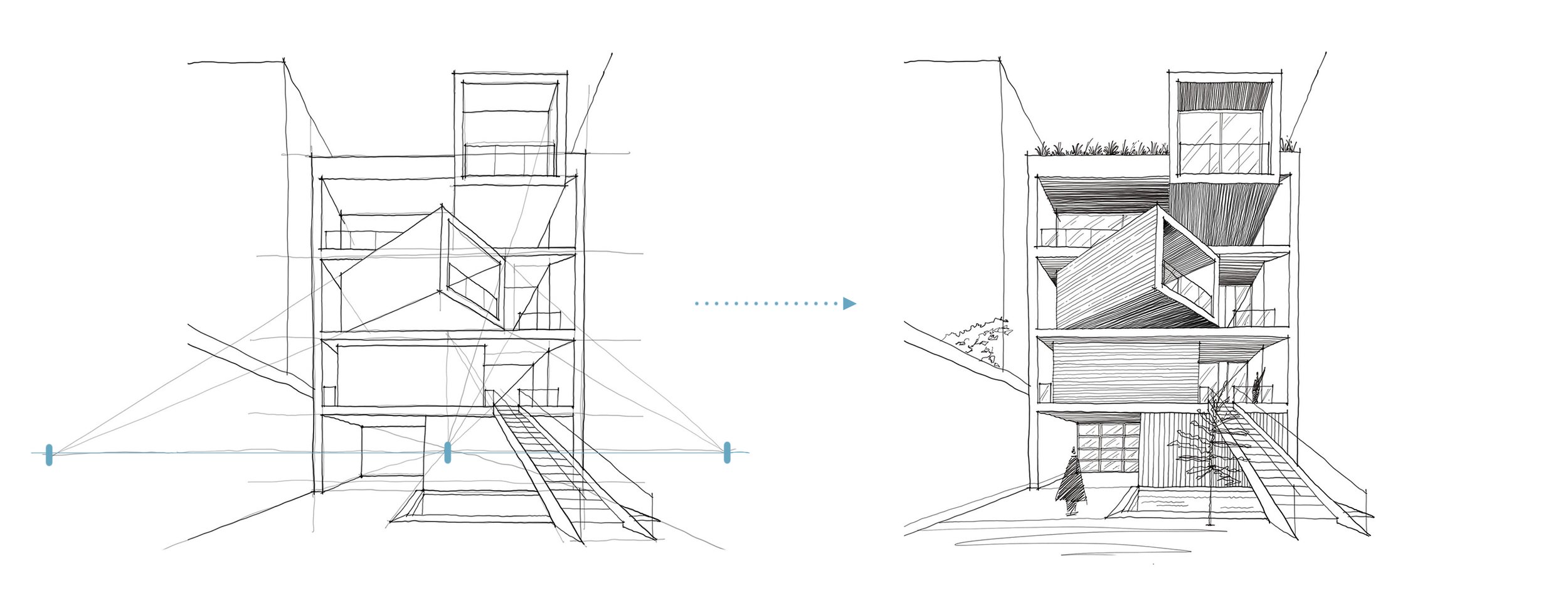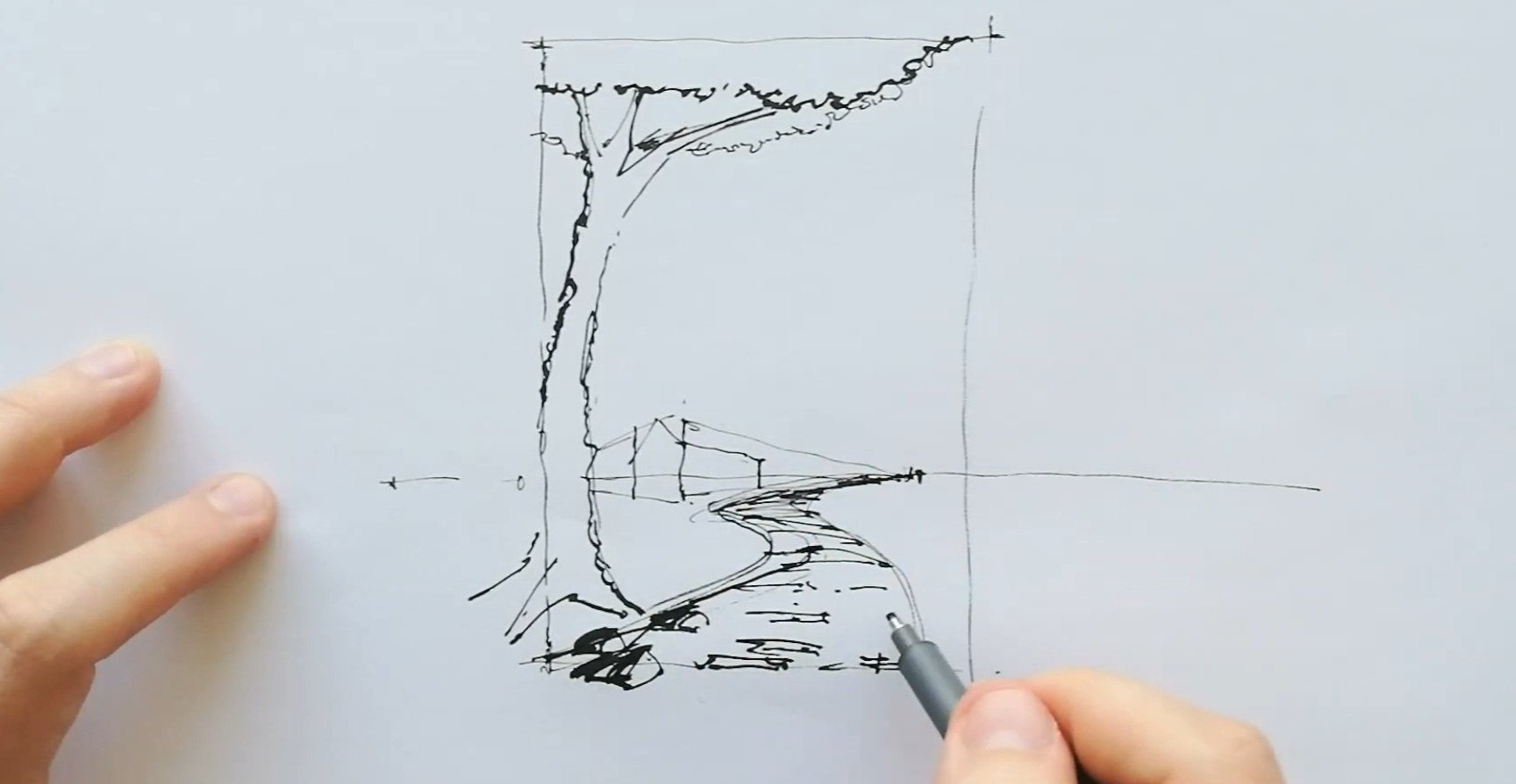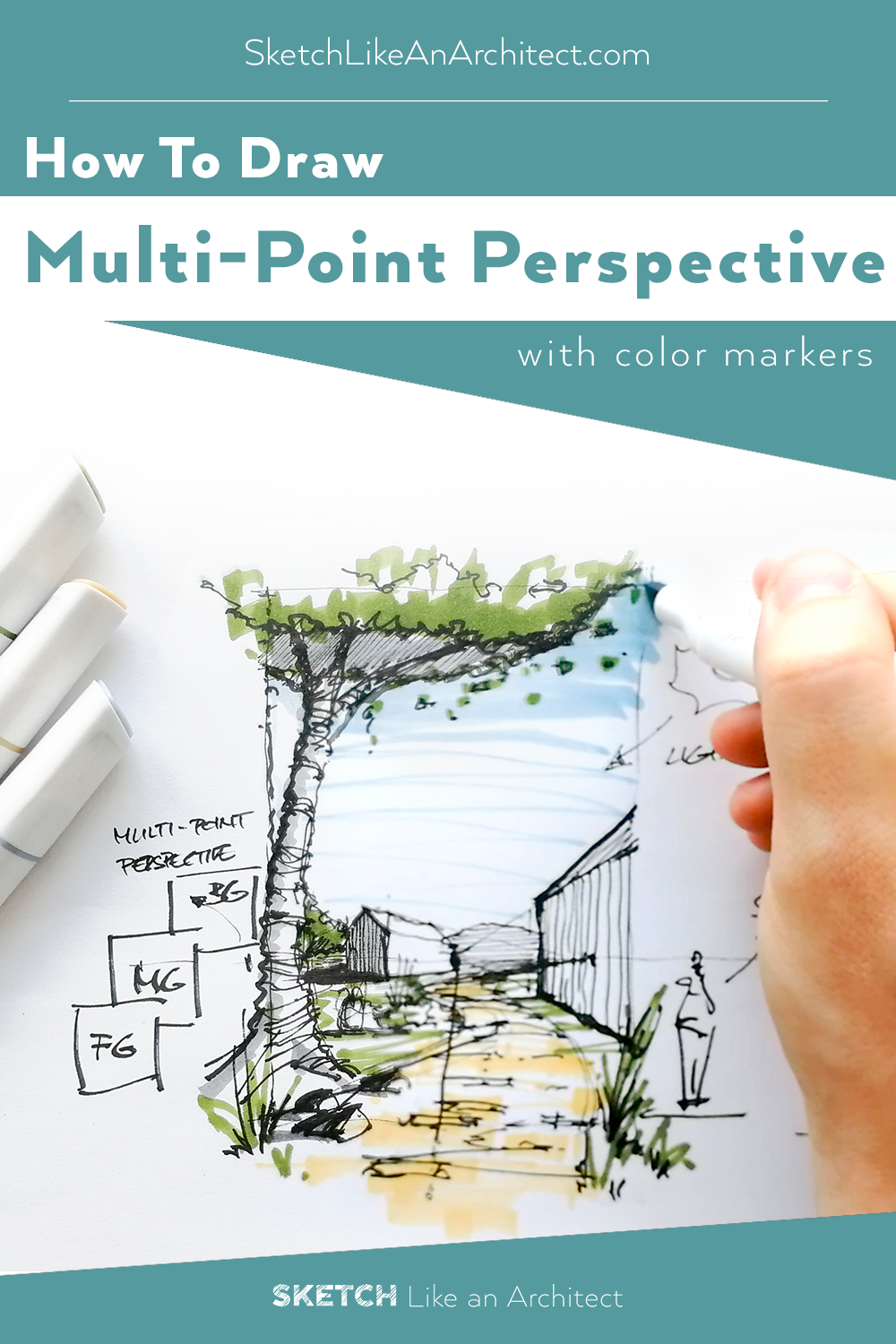How to Draw Multi-Point Perspective Sketch with Color Markers
ANYONE CAN DRAW A MULTI-POINT PERSPECTIVE VIEW! (Follow-Along Video)
In this article, I am drawing a country-side theme from my imagination with a multi-point perspective. I’ll guide you step-by-step through the process and explain the principles behind it. If you are a beginner in sketching, I believe this article will help you to be more confident in drawing perspective while learning all the fundamentals. Let’s get started!
What is a multi-point perspective? Can I still sketch a multi-point perspective as a complete beginner in drawing? How many vanishing points are there in a multi-point perspective drawing? Today, I am going to answer all of these questions while drawing a country-side theme with you.
At the same time, you can also draw along with me by watching this Youtube video below.
Let’s get started!
A multi-point perspective is a scenario with more than 2 primary Vanishing Points on the Horizon Line.
It is actually a very common and realistic scenario that happens when objects in your perspective view
don’t lie in just one orthogonal grid (like in a typical 2-point perspective),
they are not parallel to each other or are slightly rotated,
or have irregular shapes (e.g. hexagon).
Learning how to draw a multi-point perspective is especially helpful if you are an urban sketcher. Every curved road technically needs multiple vanishing points describing its changing directionality. Moreover, it can create a more realistic impression, add visual intereset and better guide the viewer’s eyers accros your image.
Here are a few examples of a multi-point perspective view for better visual explanation:
Sharifi-Ha House in Tehran, Iran - The rotated middle box doesn’t fit into a simple 1-point perspective view, and we need 2 more vanishing points to describe it. Find the full step-by-step tutorial on this alongside other 99 famous buildings in my newest book 100 Buildings & Archtiectural Forms.
Step 1: Preparation
First, I draw a picture plane which acts as a frame to fit in my drawing. Since it is countryside scenery, I draw a tree in the foreground to show the context. Then draw the horizon line at the lower third of the picture plane, which is a relatable eye-level view.
A quick Tip: It is always a good idea to avoid straight roads or streets in your images. Introduce a curved road instead so that it nicely leads the eye across the sketch.
Step 2: Adding Objects & Selective Texturing
Next, I placed a small barn along the road. If you look closely, the walls are divided roughly into halves by the horizon line which sets the scale.
When placing different objects in your scene, always ask yourself: how does it relate to the viewer’s position?
I also used selective texturing to suggest a stony road and extended the texturing slightly outwards from the picture plane to create more depth. Then I sketch another barn and positioned it closer to the viewer. This is when another vanishing point is created and makes it a multi-point perspective view.
Step 3: Creating More Contrast & Depth
Put in some effort to add details to the foreground object. It is because a higher level of detail and contrast can help support the illusion of depth. In this case, I am adding more details to the tree which is framing the view.
At the same time, keep the rules of atmospheric perspective in mind, where the thicker strokes are used in the foreground. As we draw elements towards the background, further from the viewer, thinner lines are used.
It is also a practice commonly used in architecture section drawing to distinguish what elements are being cut and what is displayed in elevation.
Step 4: Cast Shadow
I added a couple of annotations and human figures to anchor the scale. Check out this article to learn how to populate your sketches, and why it is so important to draw human figures.
Then, I move on with adding vertical hatching to the shaded surfaces of the barns. If you look closely, I drew a sun outside the picture plane to remind myself where the light source is.
To learn more about constructing shadows in perspective, check out this step-by-step tutorial from my blog.
Step 5: Colouring with Markers
One of the questions that I get asked most often is — What color marker am I using?
If you are a beginner in hand sketching, most likely you will be overwhelmed by the vast choices of tools out there. This is why I have organized all of my favorite tools in a list to help you make better decisions. Click this link to read.
After coloring the sky, trees, and road, I used a brush pen to darken the shadows and increase the contrast of the sketch. And voila… the final result looks something like this.
If you want to sketch along, I have prepared 3 process sheets to make it easier for you to follow allong or just focus on the coloring part with markers. Click the button below to download the practice sheets for free.
What’s next?
I hope you enjoyed this article - if you did, check my other blog posts below!
Save this article on Pinterest for future reference & inspiration 👇










